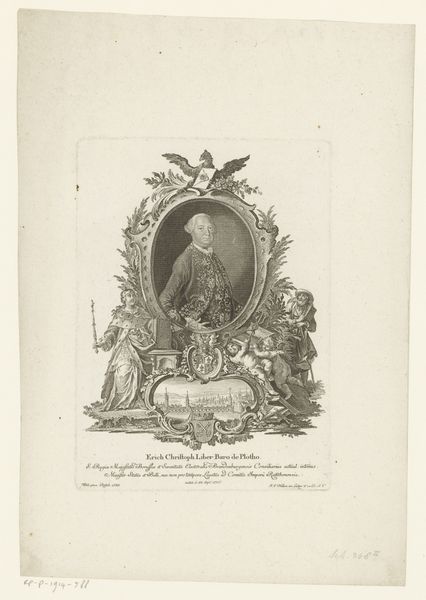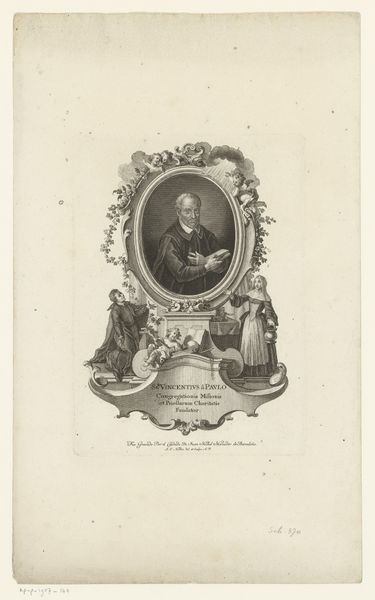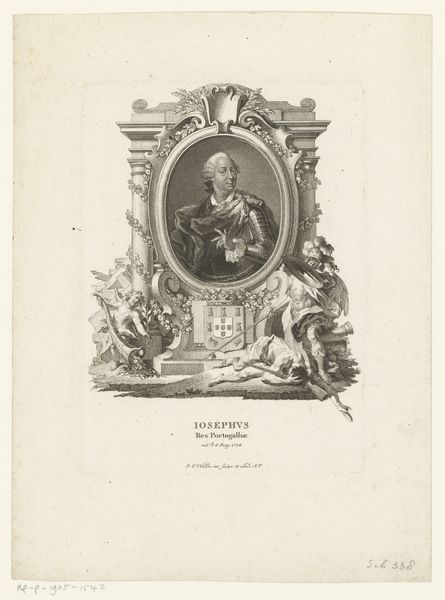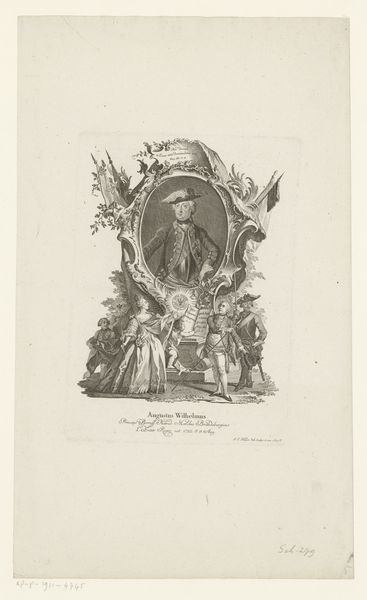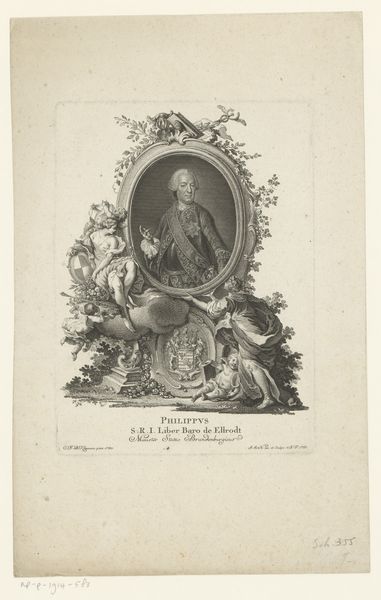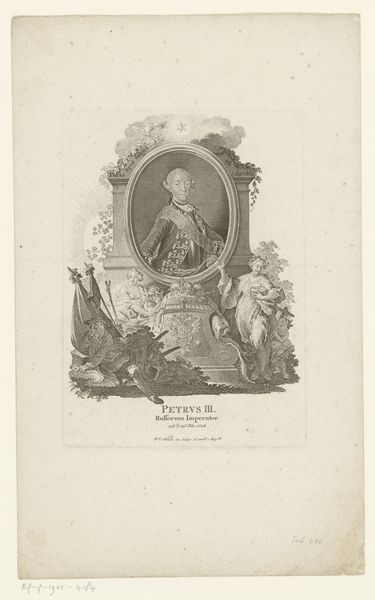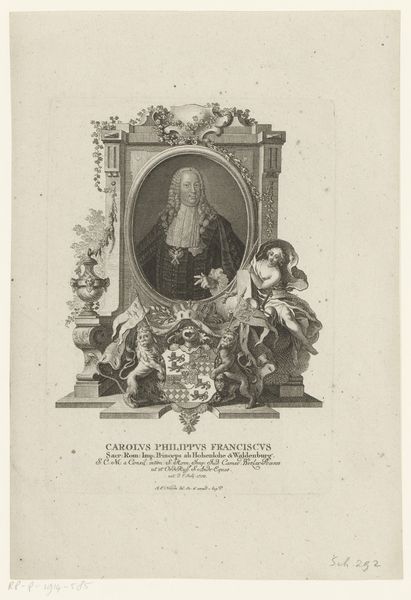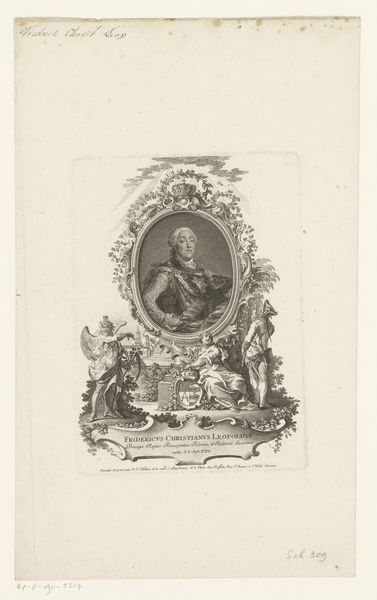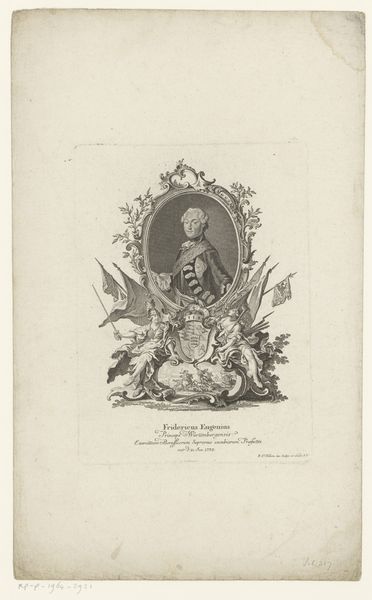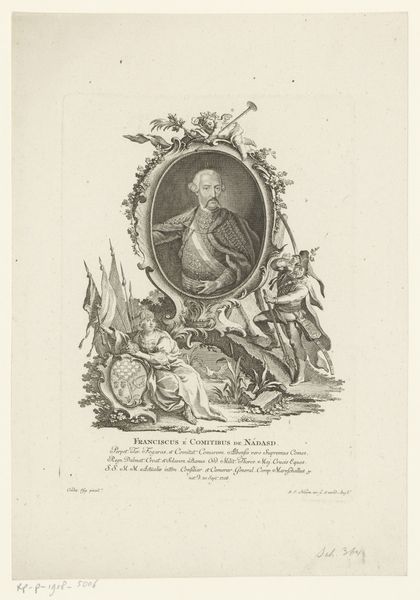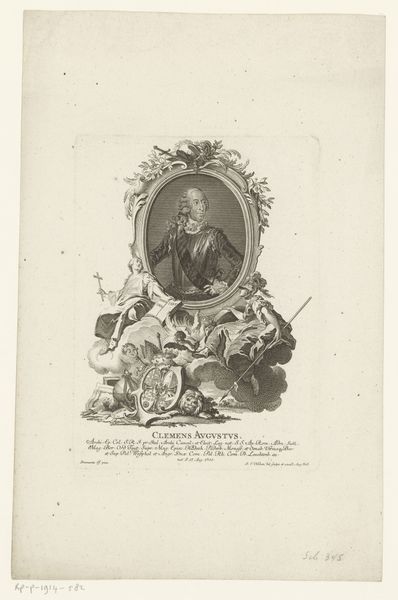
Dimensions: height 225 mm, width 160 mm
Copyright: Rijks Museum: Open Domain
Curator: Before us, we have a fascinating print by Johann Esaias Nilson, "Portret van Mustafa III," created sometime between 1757 and 1788. It's an engraving, and quite a striking one, wouldn’t you say? Editor: Strikingly...grey! It's austere, almost ghostly, with that ornate oval frame around the Sultan like he’s a spirit being summoned. A bit melancholic. Curator: Yes, it's certainly rendered in the old engraving style. Notice how Nilson uses very fine lines to create shading and detail. Focus on the elaborate turban and the fur-lined robe, symbols of status and power. This portrait really exemplifies Baroque portraiture—even if it feels somewhat removed. Editor: But what about the choice to portray Mustafa III in this particular style? Given that he was an Ottoman Sultan, what are we to make of presenting him within what you've termed a "Baroque" framework, with what seems to be an allusion to neoclassicism? Curator: A key stylistic feature is the ornamental surround. The almost-hidden faces lurking between the leaves create an uncanny atmosphere, and there is definitely something unusual in finding Islamic art rendered in such a classical European style. Perhaps an attempt to bridge cultures? To depict him as an enlightened ruler for a European audience? Editor: Possibly, although those faces, with their obscured quality, remind me that every effort at cultural understanding carries some degree of mystery. It has that aura that so many things in life don't quite fully align when one thinks about them. There is so much in this image to be puzzled over. Curator: I find it intriguing that Nilson, a German artist, chose to depict the Ottoman Sultan. It speaks to the interconnectedness of the world even back then, and to the fascination with different cultures. The Rijksmuseum is so rich with cross cultural depictions like these. Editor: Absolutely! "Cross cultural" sums it up—especially when considering that the cross itself also forms a fundamental component of the symbolic vocabulary. The piece now speaks more quietly to me. Thank you for opening the piece up to more rich reflection.
Comments
No comments
Be the first to comment and join the conversation on the ultimate creative platform.

